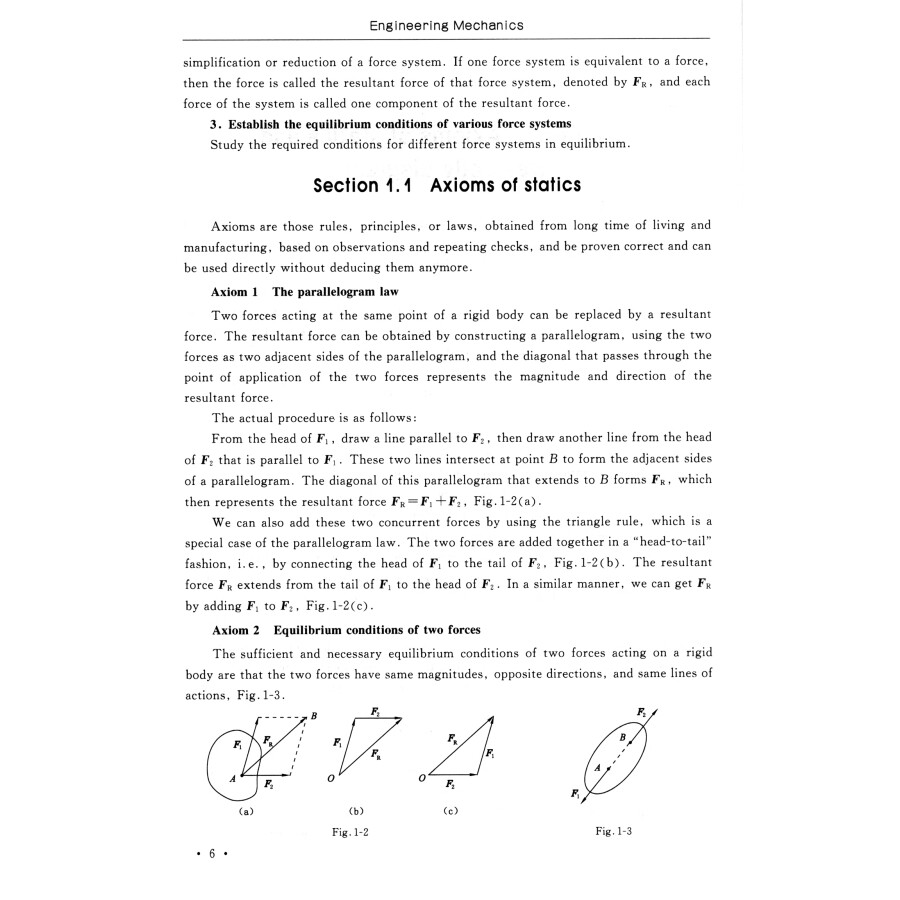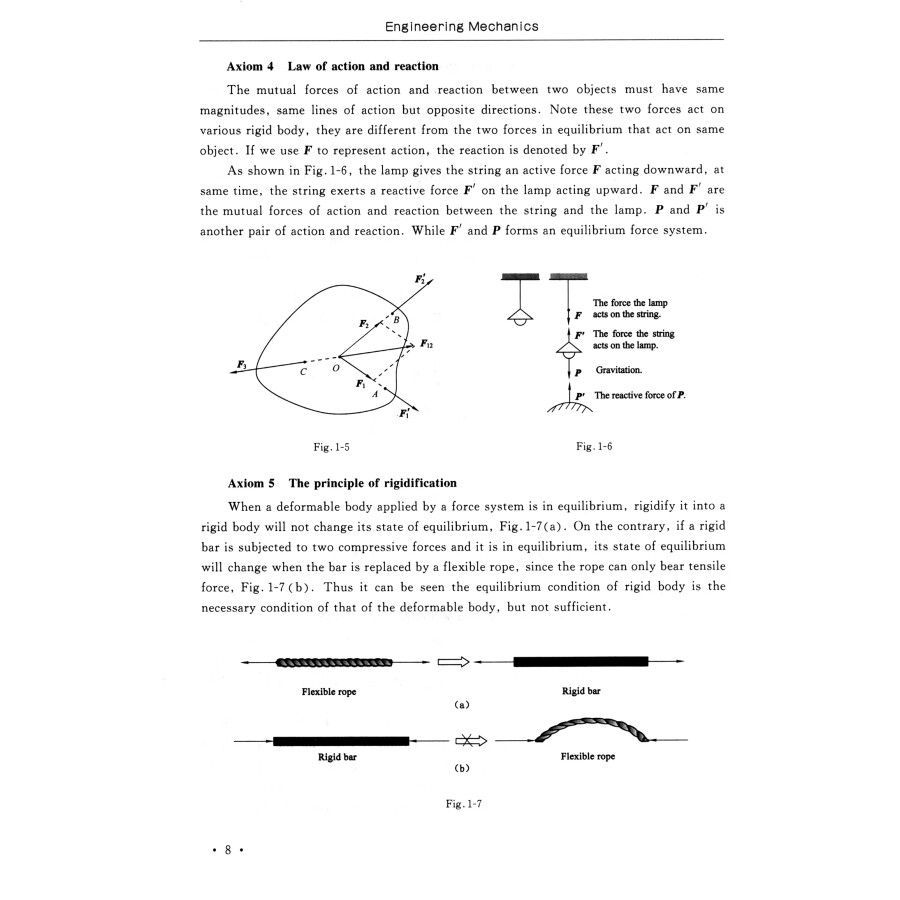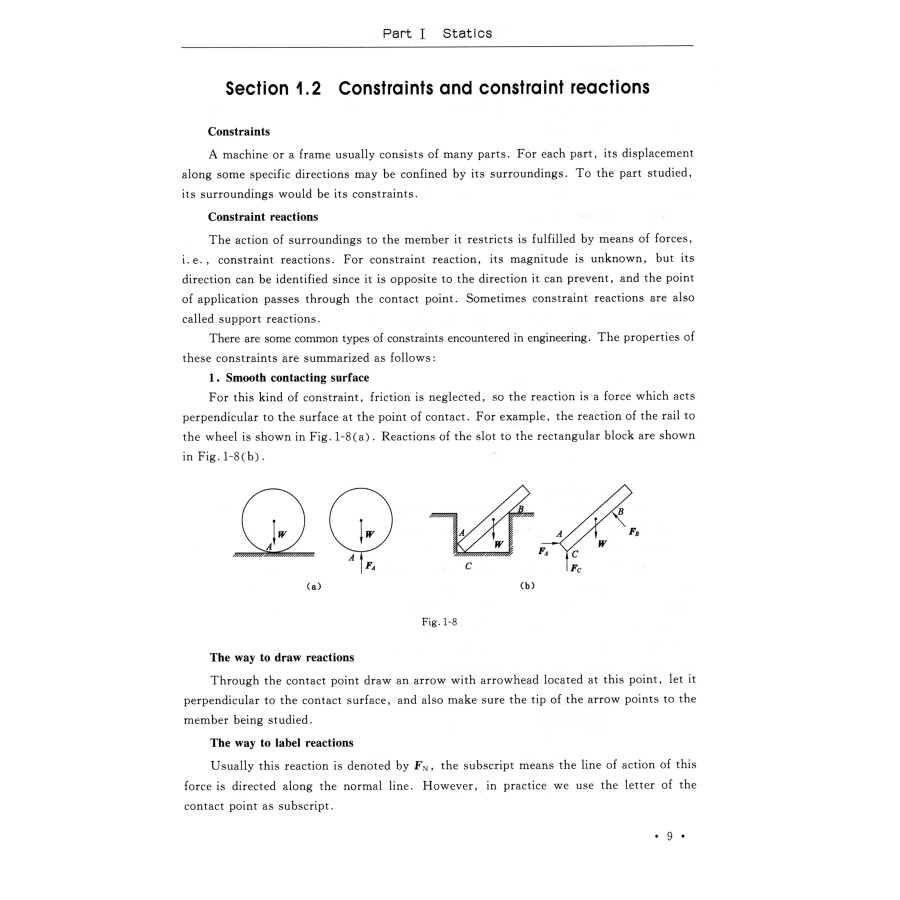Home ::
new ::
Engineering Mechanics Experiment Course
Details
Mechanics is a branch of the physical sciences which studies the state of rest or motion of bodies under the effect of forces. In general, it can be subdivided into three branches: rigid-body mechanics, deformable-body mechanics, and fluid mechanics.
As far as a rigid body is concerned, it's a combination of a large number of particles in which all the particles remain at a fixed distance from one another, both before and after applying a load. In other words, if an object doesn't deform when it's subjected to a loading system, then we can take it as a rigid body. From this definition we can know rigid body is an idealization, in fact there is no rigid body in the universe. But in most cases the actual deformations occurring in structures, machines, mechanisms, and the like are relatively small, so these deformations can be neglected and the rigid-body assumption becomes reasonable.
Rigid-body mechanics is very important since it's a basic requirement for further study, and it has three parts: statics, kinematics and kinetics. Statics mainly deals with equilibrium of objects that are subjected to the action of forces, kinematics studies the geometrical properties of the motion but the reason is not considered, while kinetics establishes relationship between force and motion. In this book, we will learn the first part of rigid-body mechanics and deformable-body mechanics which is usually known as mechanics of materials.
Table of Contents
Introduction
Part I Statics
Chapter 1 Axioms of statics and free-body diagram
Section 1.1 Axioms of statics
Section 1.2 Constraints and constraint reactions
Section 1.3 Force analysis and the free-body diagram
Chapter review
Problems
Chapter 2 Planar force system
Section 2.1 Classification of force system
Section 2.2 Reduction and equilibrium of planar concurrent force system
Section 2.3 The moment of a force about a planar point
Section 2.4 Reduction and equilibrium of planar couple system
Section 2.5 Reduction of general planar force system
Section 2.6 Equilibrium for general planar force system
Section 2.7 Statically determinate and indeterminate problems, equilibrium of body system
Section 2.8 Planar truss
Chapter review
Problems
Part II Mechanics of materials
Chapter 3 Introduction of mechanics of materials
Section 3.1 The task of mechanics of materials
Section 3.2 Basic assumptions of deformable bodies
Section 3.3 The classifications of external loads
Section 3.4 The concepts of internal forces, method of sections and stresses
Section 3.5 Deformations and strains
Section 3.6 Basic types of deformation of a prismatic bar
Chapter review
Problems
Chapter 4 Tension, compression and shear
Section 4.1 Internal loadings of an axially loaded member
Section 4.2 Stress developed in an axially loaded member
Section 4.3 Mechanical properties of materials
Section 4.4 Failure, factor of safety and strength condition
Section 4.5 Elastic deformation of an axially loaded member
Section 4.6 Statically indeterminate axially loaded member
Section 4.7 Stress caused by temperature change or manufacture error
Section 4.8 The concept of stress concentration
Section 4.9 The utility computing of shear and squeezing stress
Chapter review
Problems
Chapter 5 Torsion
Section 5.1 Internal torque and internal torque diagram
Section 5.2 The stress for a circular shaft in torsion
Section 5.3 The deformation of a circular shaft in torsion
Section 5.4 Statically indeterminate torque-loaded members
Chapter review
Problems
Chapter 6 Bending
Section 6.1 Classifications of beams
Section 6.2 Shear and moment diagrams
Section 6.3 The flexture formula
Section 6.4 The shear formula
Section 6.5 Deflection of beams
Section 6.6 Statically indeterminate beams
Chapter review
Problems
Chapter 7 Stress and strain transformation, theories of failure
Section 7.1 Plane-stress transformation
Section 7.2 Mohr's circle-plane stress
Section 7.3 Triaixal stress and absolute maximum shear stress
Answers
References



